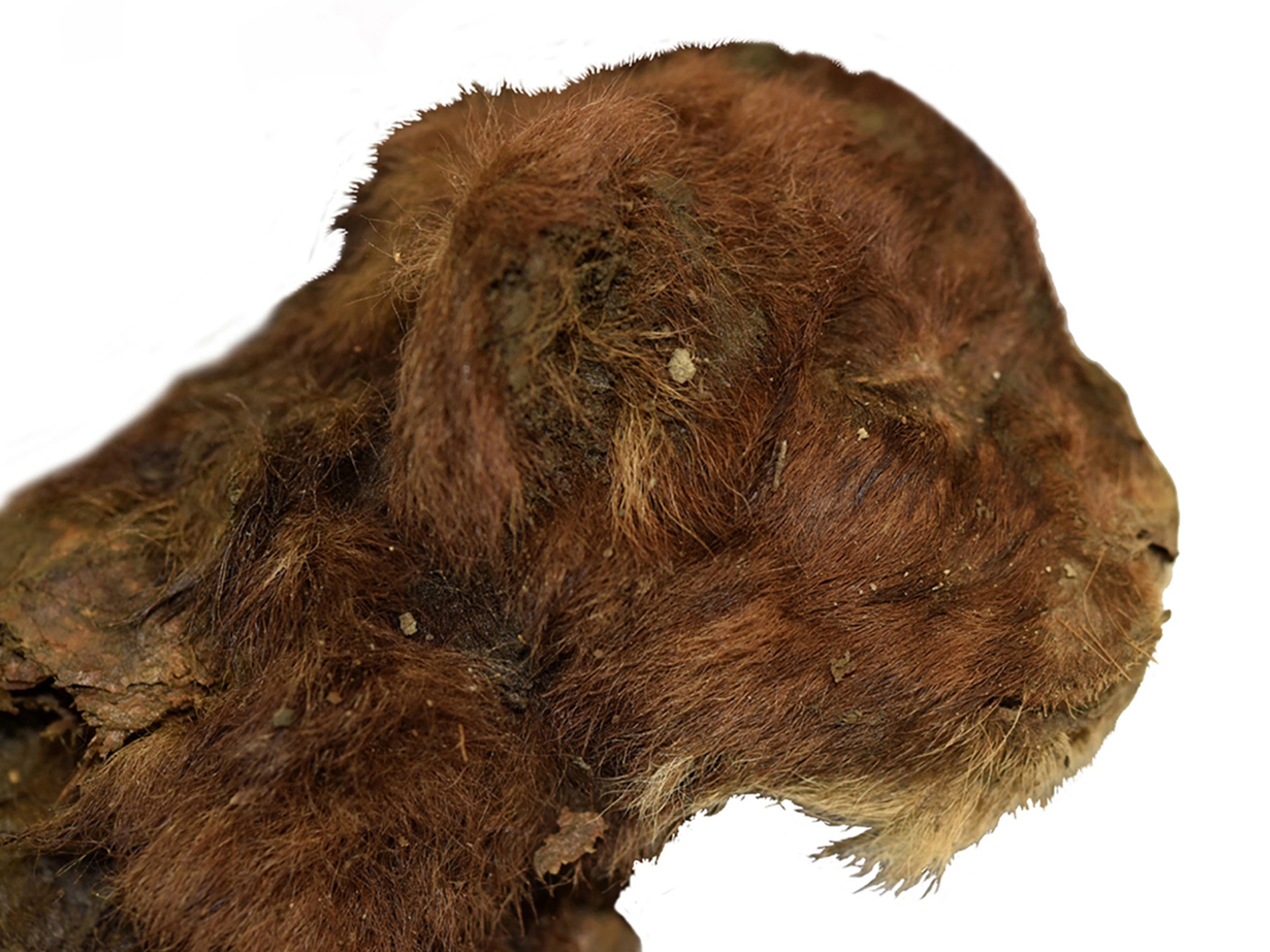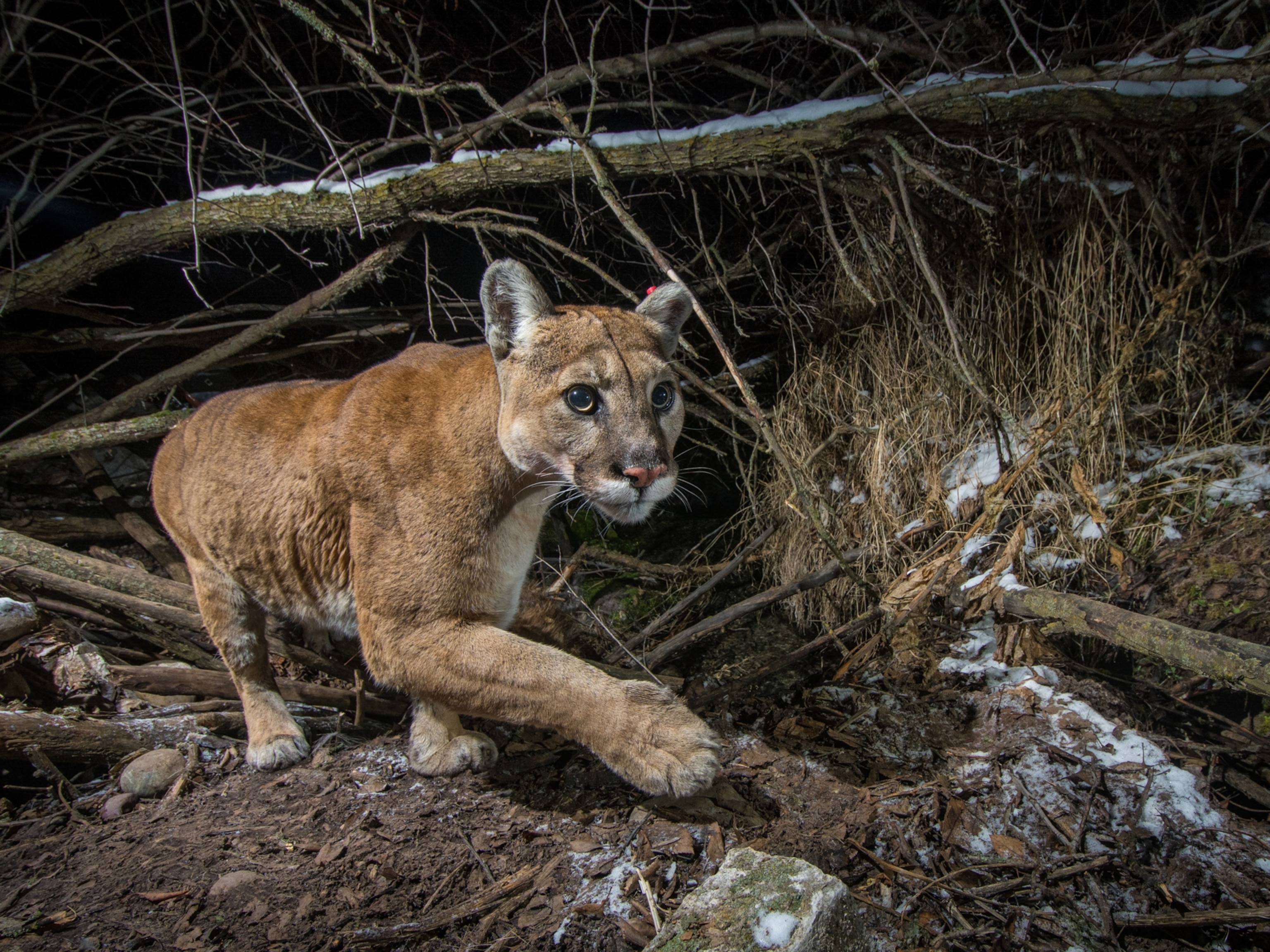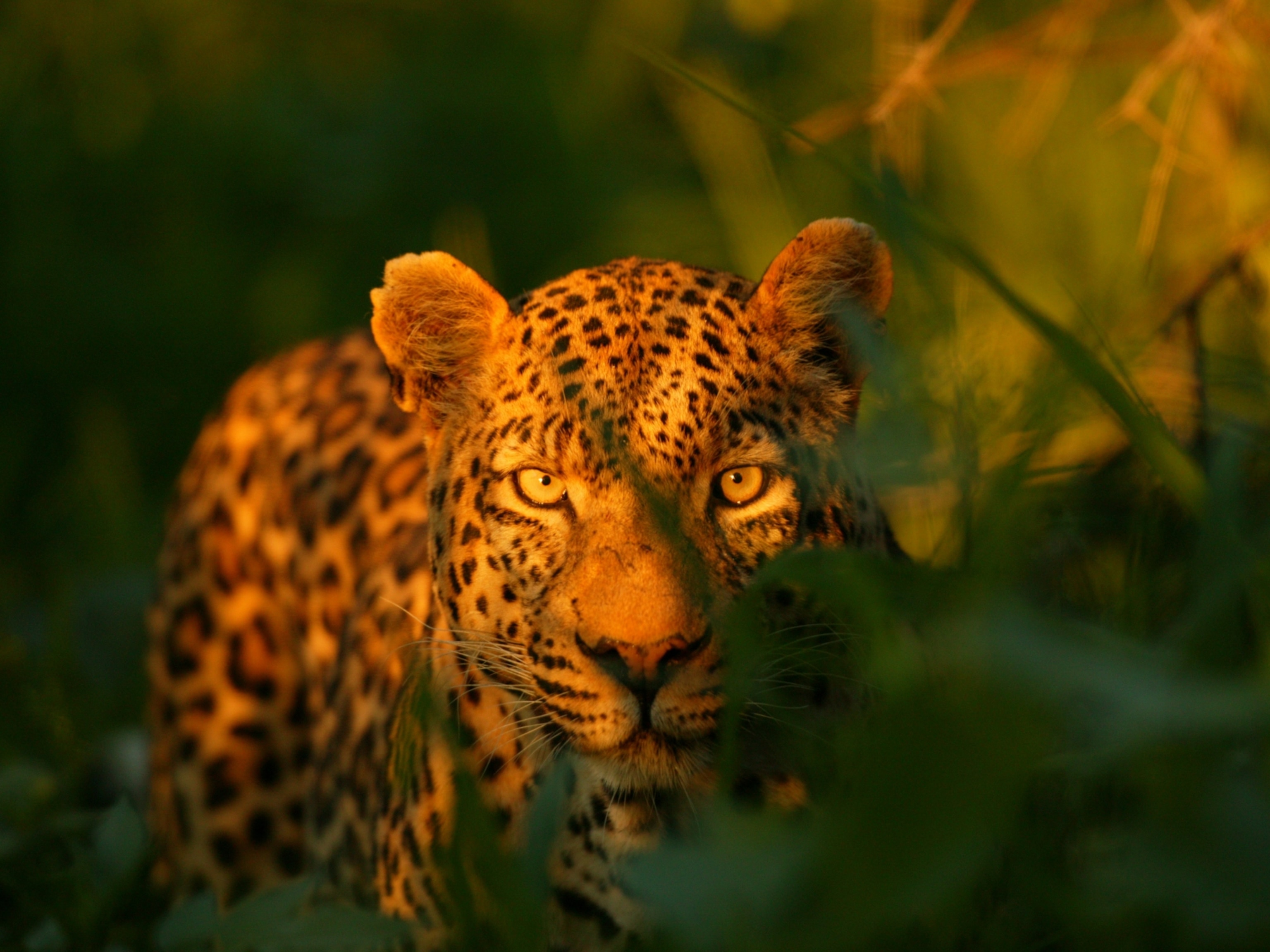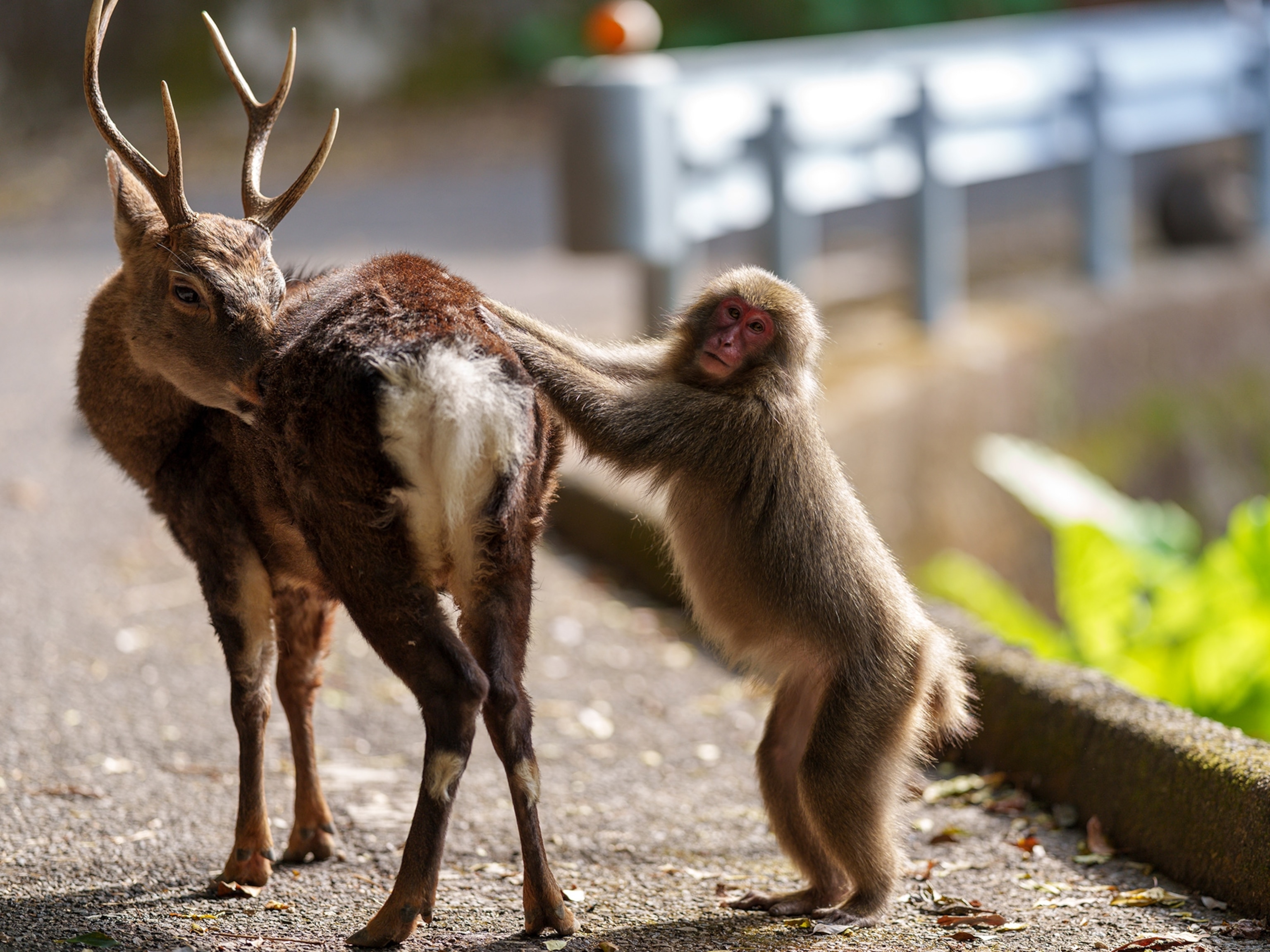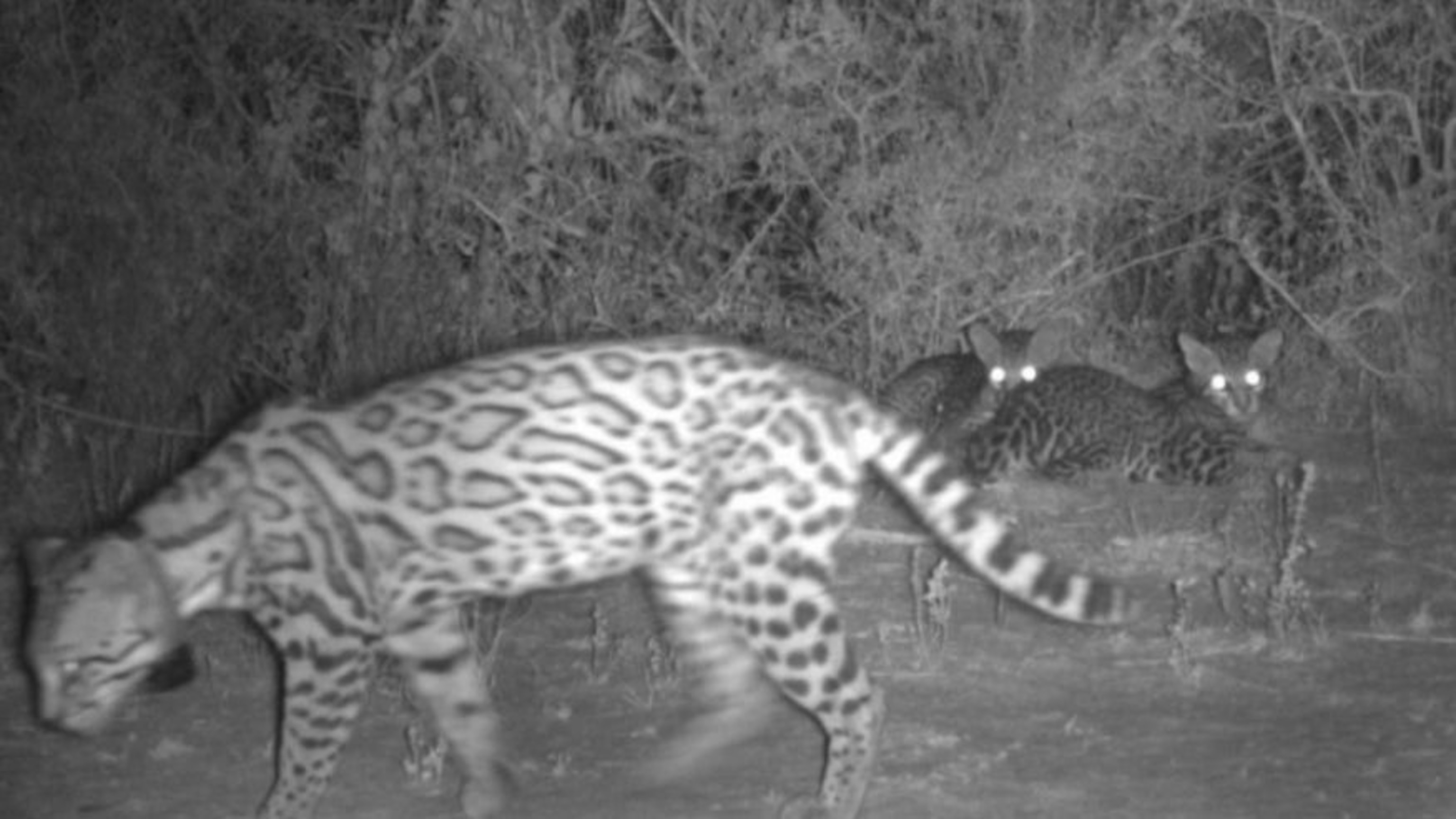
Rare Ocelot Kittens Caught on Camera
Biologists were overjoyed to find the healthy babies, including a “breathtaking” male cub in its den on a wildlife refuge.
Using GPS technology and camera traps, biologists were thrilled to find rare litters of ocelot kittens and a den site—the first found for the small wild cats in a South Texas refuge in nearly two decades.
Hilary Swarts, a wildlife biologist for the U.S. Fish and Wildlife Service, says the kittens were spotted in April at two separate locations, though the news was released just last week.
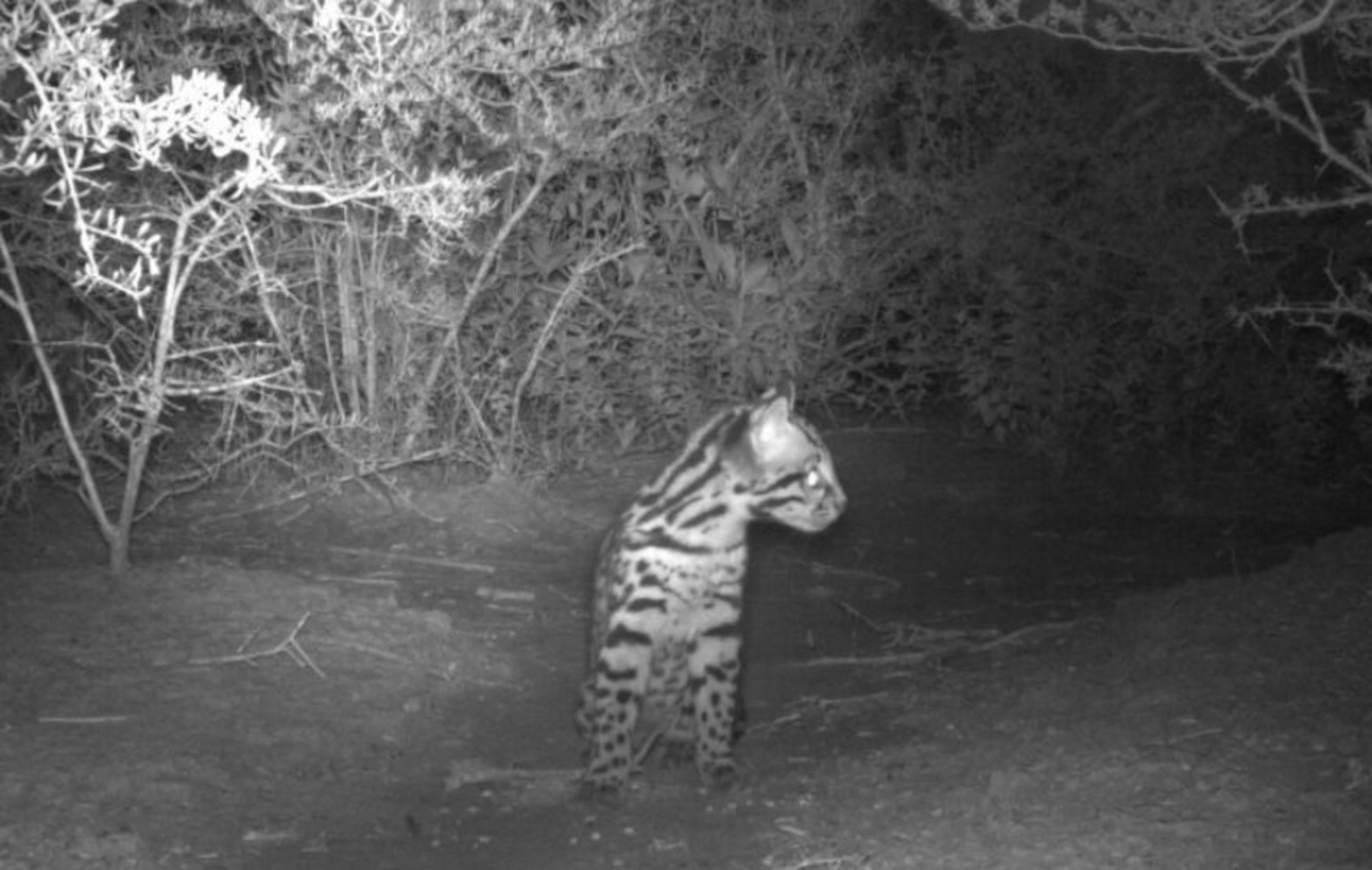
The researchers detected four ocelot kittens on the Yturria Conservation Easement, a swath of privately owned ranch land that is protected in perpetuity as a home for wildlife.
“[At the easement], we detected three moms with litters, and one of those moms had twins, which is not typical and was incredibly exciting for us,” Swarts says.
And at the Laguna Atascosa National Wildlife Refuge south of the easement, camera traps revealed three more mother ocelots with healthy kittens. Seven known females currently live on the reserve.
“Our seventh female is the one where we actually found the den site and found the 400-gram—less than a pound—little boy, who was breathtaking,” Swarts says.
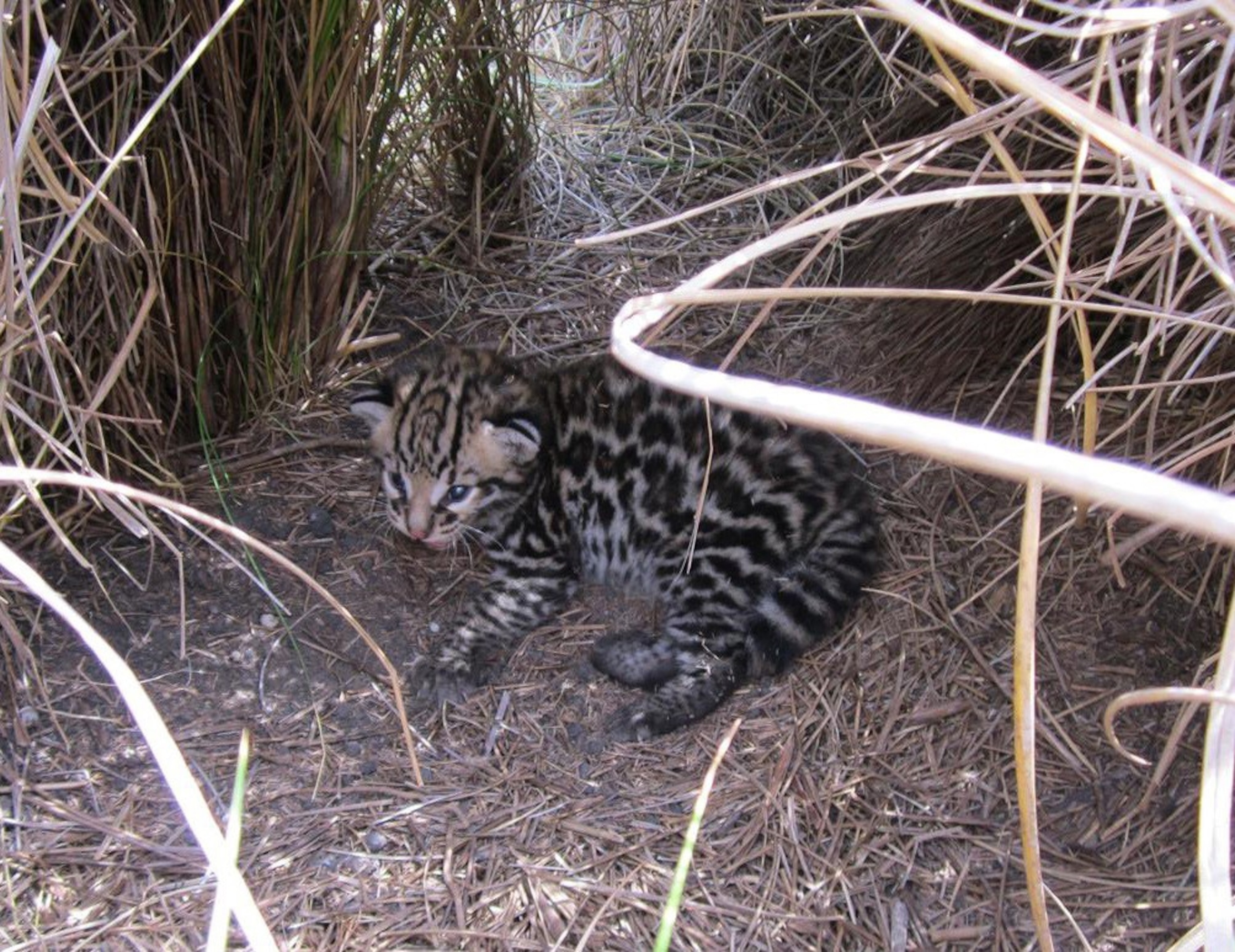
According to the GPS collar data from the mom, the site was the second den used for the same kitten.
“That is very typical,” Swarts says. “The mom will have the kitten in one spot and stay there for two or three weeks before moving them to another spot for two or three weeks.”
Theories as to why ocelots might move den sites include evading predators or avoiding infestation from fleas and ticks.
Good Strides
The news of these adorable kittens is welcome in South Texas, where biologists have identified about 50 of the wildcats by their coat patterns. A statewide estimate currently falls anywhere between 80 to 100 total ocelots.
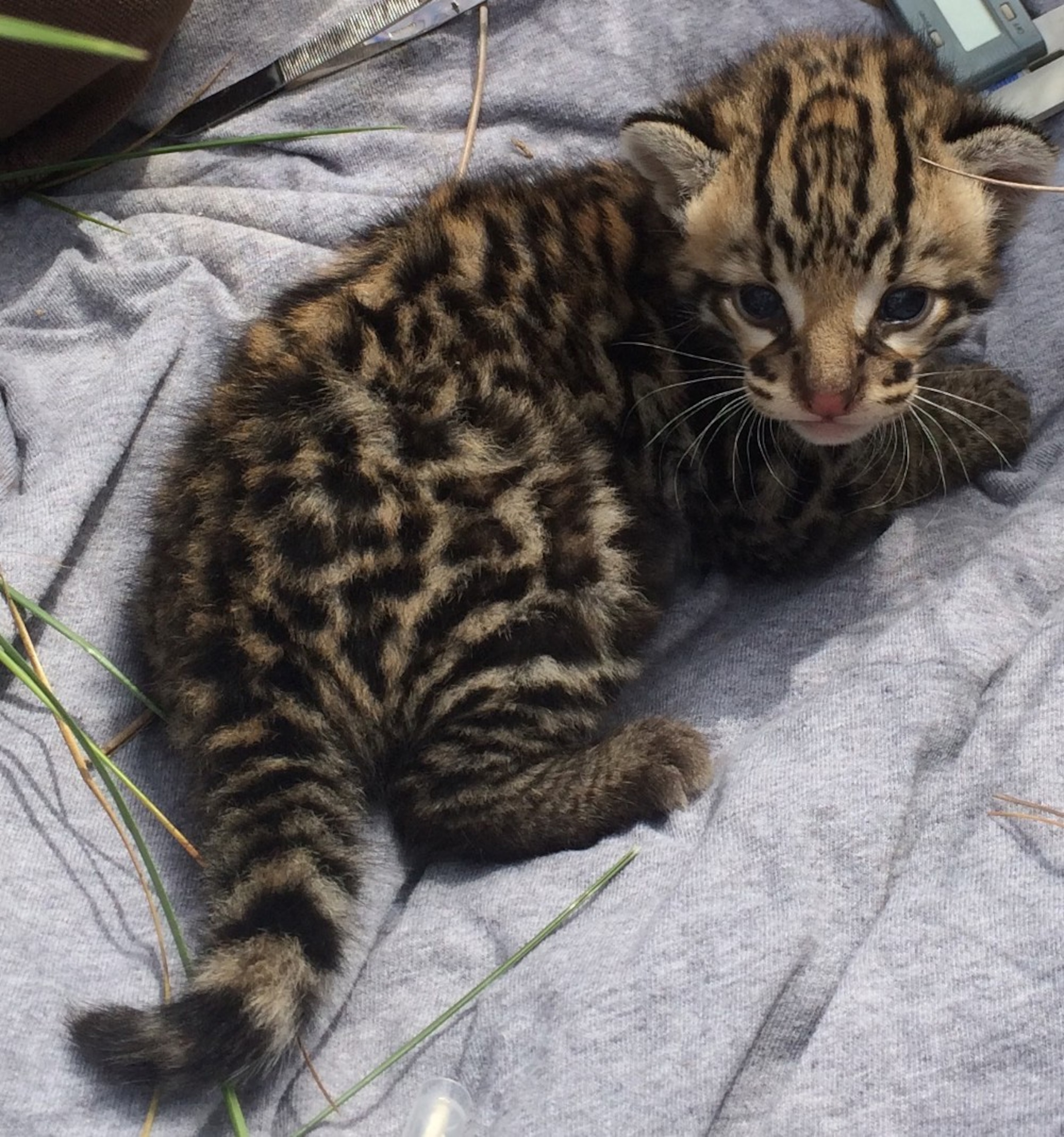
While the small cats roam throughout South and Central America, they are considered endangered in Texas. In the United States, ocelots used to range as far east as Arkansas and Louisiana, but today only a small subpopulation lives in the wild in the Lone Star State, and about 95 percent of their original habitat has been cleared, Swarts says. (Read "Last Stand for U.S. Ocelots?")
“That clearing means that some of those areas are fragmented from each other, so to get from one habitat to another, they have to pass through human nature,” Swarts says. “That leads to the other big threat: getting hit by cars.”
Genetic isolation, which leads to reduced genetic diversity, is also problematic for ocelots and brings its own set of issues, like reduced disease resistance.
Ultimately, though, Swarts is optimistic: “What was so great with seeing the burst of kittens this year—though from a statistical perspective, it is impossible to say whether there was a bumper crop or not—[is that] they’re doing their job, which is to produce more ocelots, and we have been making some good strides as far as reducing threats.”

